How AI Sensors Improve Seasonal Plant Monitoring
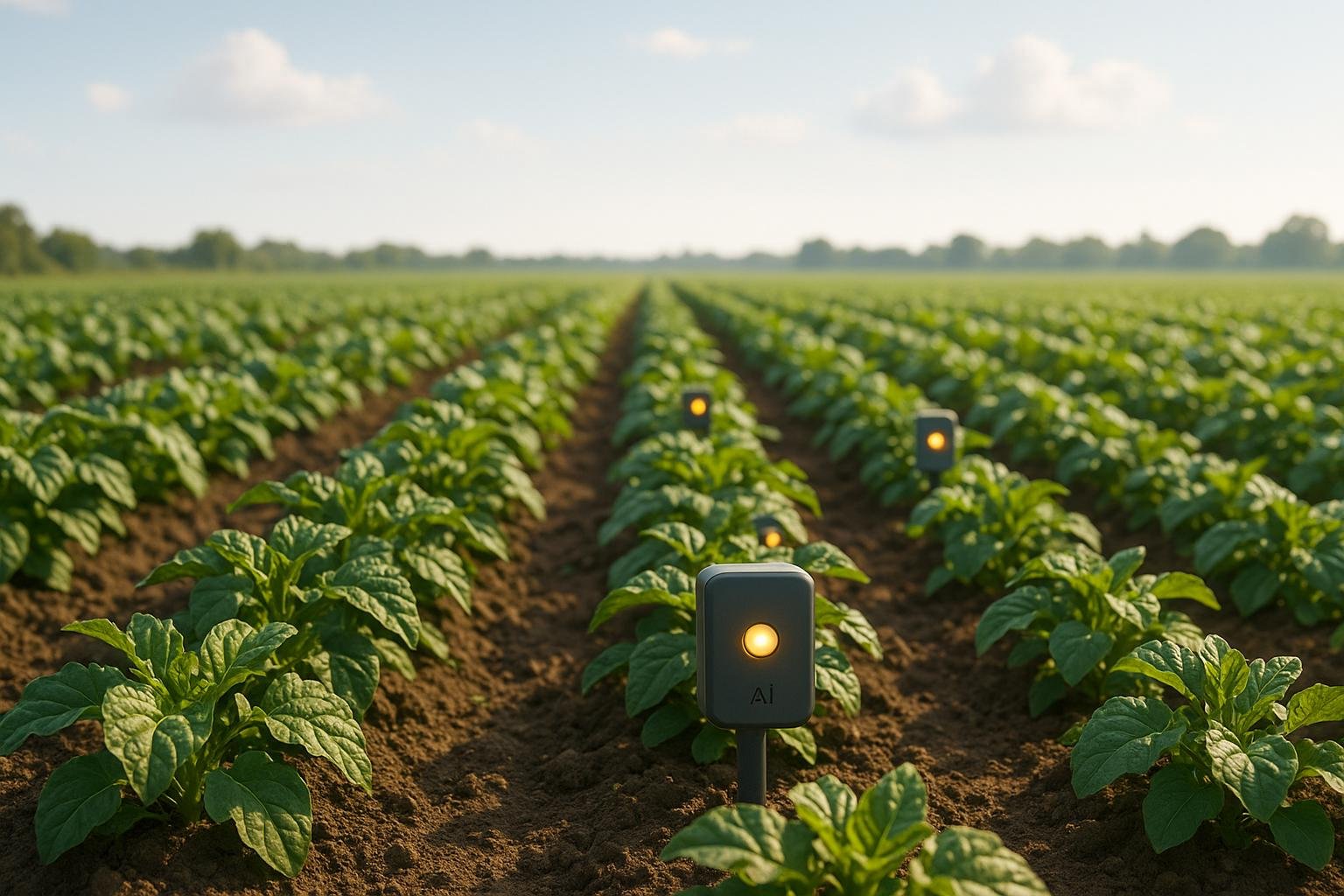
AI sensors are changing how plants are monitored by providing real-time data and actionable insights. Here's what they do:
- Detect Problems Early: AI identifies plant stress, diseases, and pests with over 95% accuracy, weeks before visible symptoms appear.
- Save Resources: Smart sensors reduce water use by 20–40%, fertilizer by 15–25%, and labor costs by 25–40%.
- Boost Yields: Precision monitoring increases crop yields by 20–30% through better resource management and timely interventions.
- Track Growth Over Time: AI analyzes seasonal growth patterns, helping farmers predict harvest times and optimize planting.
Quick Comparison
| Feature | Traditional Monitoring | AI Monitoring |
|---|---|---|
| Data Collection | Manual, periodic | Continuous, real-time |
| Analysis Speed | Days to weeks | Instant |
| Resource Efficiency | Variable | 20–40% improvement |
| Problem Detection | Reactive | Preventative, 95% accurate |
AI-powered tools like Microsoft FarmBeats and IoT soil sensors are already helping farmers save water, reduce costs, and grow healthier plants. These technologies are transforming agriculture, making it smarter, more efficient, and better equipped to handle seasonal challenges.
GARDEN MONITORING SYSTEM USING AI || PERVASIVE AI DEVELOPER CONTEXT || USING KR260 KIT

Key AI Sensor Technologies
AI-powered sensors are transforming agriculture by providing real-time plant data that helps optimize growth conditions and catch problems early - before they become visible.
Hyperspectral Imaging for Plant Analysis
Hyperspectral imaging (HSI) is changing how plant health is monitored. By capturing data from 250 spectral bands, it detects subtle changes in plants that are otherwise invisible. This technology measures how plants reflect light across the electromagnetic spectrum, uncovering hidden issues.
"Hyperspectral imagery is revolutionising the way Earth observation data is utilised in the agricultural sector." - Amy Zammit
One study showed that HSI could detect drought stress in lettuce with 90% accuracy - within just four days and well before symptoms appeared.
IoT Soil Monitoring Systems
IoT soil sensors are helping farmers manage resources more efficiently, cutting labor and input costs while boosting yields. Here's a snapshot of their impact:
| Benefit | Impact |
|---|---|
| Water Conservation | 20–30% reduction in usage |
| Fertilizer Efficiency | 15–25% decrease in application |
| Labor Cost Savings | 25–40% reduction |
| Crop Yield Increase | 20–30% improvement |
A great example comes from Calgary, where a community garden used TEKTELIC's KIWI Agriculture Sensor system. By automating irrigation based on real-time soil moisture, they saved 30% on water usage.
Temperature and Climate Sensors
Temperature and climate sensors act like the environmental "eyes and ears" of modern farms. These devices continuously track conditions that affect plant growth and seasonal changes.
"We give soil experts the insights and data they need to manage their land in the most efficient and effective ways." - Soil Scout Ltd
When paired with AI, these sensors enable farmers to:
- Predict and prepare for seasonal shifts
- Fine-tune greenhouse environments
- Prevent frost damage
- Adjust irrigation schedules based on weather
In Europe, farms using these sensors with LoRaWAN® connectivity have successfully managed multiple growing zones with varying needs. This approach ensures better resource distribution and healthier crops.
Together, these advanced sensor technologies allow AI to turn plant data into actionable insights, paving the way for smarter farming practices.
How AI Processes Plant Data
AI systems transform raw sensor data into meaningful insights, helping optimize plant growth and manage resources more efficiently. These algorithms handle massive amounts of data in real time, allowing for precise monitoring and quick adjustments to changing conditions.
Growth Pattern Analysis
AI has a knack for spotting subtle growth patterns that might go unnoticed by the human eye. By analyzing multiple data streams at once, these systems can pick up early signs of stress or disease. While traditional methods may take days to diagnose issues, AI can analyze images and deliver diagnoses within seconds, boasting accuracy rates above 90%.
"We have provided a tool for botanical experts to assess plant health in one solution without the need to gather samples and damage the plants in the process." - Marques, First Author
One example of AI in action is SupPlant's system, which uses live data from various sensors to create detailed growth profiles. Here's a breakdown of what their AI analyzes:
| Data Type | What AI Analyzes |
|---|---|
| Plant Stress | Real-time physiological responses |
| Growth Patterns | Fruit and plant development stages |
| Weather Impact | Current and forecasted conditions |
| Soil Health | Moisture content and nutrient levels |
These instant assessments not only address immediate concerns but also set the stage for tracking growth trends over time.
Long-term Growth Tracking
AI's strength in time-series analysis makes it invaluable for monitoring seasonal changes and long-term growth patterns. The technology learns from each growing cycle, enhancing its predictions and recommendations with every iteration.
Take, for example, a study on wheat yellow rust detection. Using multispectral UAV imagery, AI achieved an 89.3% accuracy rate in identifying disease patterns across seasons. This level of precision provides farmers with the tools to:
- Predict yields more accurately
- Decide on the best harvest times
- Allocate resources effectively throughout the season
- Consistently monitor soil health metrics
Over time, AI systems collect and analyze data on:
- Ideal growing conditions for specific plant types
- Interactions between environmental factors
- Patterns in resource use
- Seasonal growth variations
sbb-itb-4d6a8dd
🚀 Ready to Reinvent Your Garden?
Join thousands of homeowners who have transformed their gardens using our AI design tool. Upload one photo to explore endless possibilities.
Get your AI garden designs →Results of AI Plant Monitoring
Using AI sensors in plant monitoring has brought noticeable improvements in managing plant health and optimizing resource use. These advancements stem from AI's ability to transform raw data into practical solutions, as previously discussed.
Quick Problem Detection
AI-powered systems have changed the game when it comes to spotting and addressing plant health issues. These systems can identify problems weeks in advance with over 95% accuracy for common plant diseases and pests.
"Machine vision techniques such as segmentation have great applications in the medical field. We wanted to extrapolate this technology to other areas, such as plant health" - Marques, First Author
Take the example of a Washington State apple orchard. Their AI monitoring system detected early signs of apple scab, allowing for precise fungicide use, which saved about 15% of their crop.
AI algorithms also shine in detecting plant stress, as shown in the table below:
| AI Method | Accuracy in Stress Detection |
|---|---|
| LSTM | 97% |
| Gradient Boosting | 96% |
| RNN | 94% |
| SVM | 82% |
Once issues are identified, these systems help optimize resource allocation for better efficiency.
Smart Resource Use
Edge Impulse's machine learning solutions, combined with Arduino boards and climate sensors, have streamlined water delivery, cutting down on over-irrigation.
AI-driven monitoring has achieved:
- 20–40% reduction in water use through smarter irrigation
- Up to 90% decrease in herbicide use with targeted applications
- 25% boost in resource efficiency, reducing water consumption while maintaining yields
Better Seasonal Plant Growth
By improving detection and resource management, AI sets the stage for healthier seasonal growth. For instance, a citrus grove in Florida used AI to identify zinc deficiencies and apply targeted micronutrients, resulting in a 10% increase in yield.
Microsoft FarmBeats has taken this a step further by integrating IoT sensors to monitor soil moisture, temperature, pH levels, and weather. This data allows for precise planning of planting, irrigation, and harvesting.
Precision farming powered by AI has led to 20–30% yield increases, thanks to tailored recommendations based on specific field conditions.
Next Steps in AI Plant Monitoring
AI-driven plant monitoring is advancing rapidly, offering more precise and tailored solutions for plant care. Emerging technologies are pushing boundaries, making it easier to adapt to specific environmental conditions. One standout example is AIGardenPlanner, which uses integrated sensor data to reshape how gardens are designed and managed.
AIGardenPlanner Integration
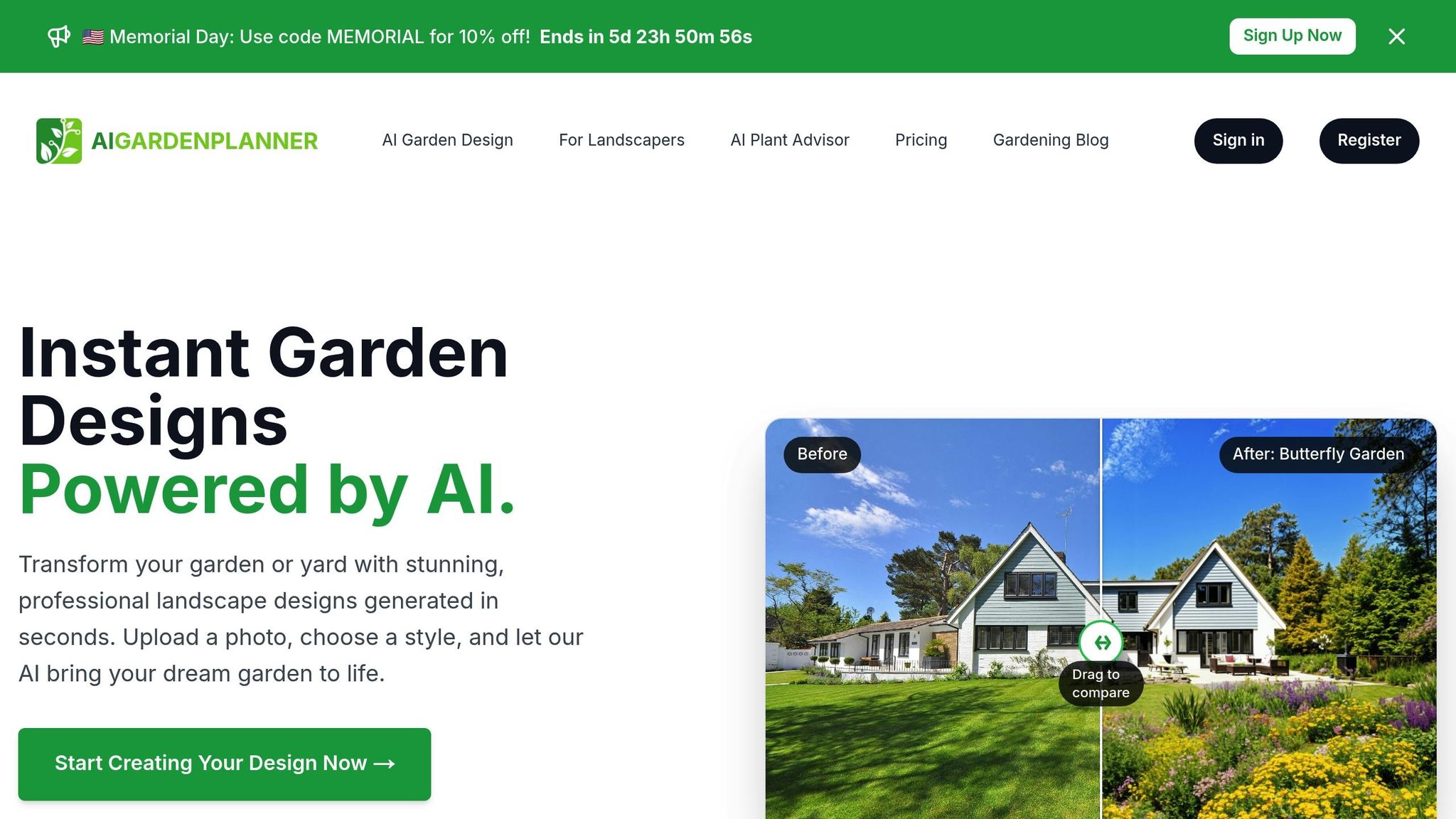
AIGardenPlanner uses AI-powered sensors to craft garden plans that adapt to local climates. By analyzing environmental data, the platform creates designs that align with specific conditions, ensuring plants thrive in their surroundings.
Research from Rize Recep Tayyip Erdoğan University highlights the effectiveness of AI-supported irrigation systems, showcasing impressive water savings:
| Planting Phase | Water Reduction |
|---|---|
| First Planting | 76.44% |
| Second Planting | 99.5% |
| Overall Average | 87.97% |
"We've been talking about precision agriculture for decades. … The AI revolution has been a missing piece that'll help us get there."
- Chris Reberg-Horton, N.C. PSI Platform Director for Resilient Agriculture
Combined Sensor Systems
Real-time monitoring has taken a leap forward with plant wearable sensors. When combined with tools like hyperspectral imaging, IoT soil sensors, environmental monitors, and remote sensing, these systems provide a detailed view of plant health and stress factors.
For example, CattleEye's 2022 initiative combined drones, cameras, and computer vision to analyze environmental conditions and their effects on living organisms. This kind of integration demonstrates how different technologies can work together to deliver actionable insights.
"The Grace Hopper gives us the capability to train even larger-scale models to become more accurate and more predictive in nature and come up with solutions to more complicated challenges"
These advancements in integrated systems are paving the way for smarter, more predictive approaches to plant care, ensuring healthier ecosystems and more efficient resource use.
Conclusion: AI's Impact on Plant Care
AI is changing the way we care for plants, using advanced tools like hyperspectral imaging and IoT sensors to revolutionize monitoring. These technologies are making a difference by cutting water use by up to 25%, increasing yields by 20–30%, and achieving an impressive 99.99% accuracy in disease detection. This level of precision allows for timely interventions that can prevent as much as one-third of crop losses.
The combination of physical and virtual sensors creates a highly efficient and affordable monitoring system, with predictions boasting error rates of less than 1%. As Michael Strano points out, these tools provide real-time diagnostics, empowering farmers and growers to act promptly when issues arise.
AI's influence isn't limited to agriculture - it’s also making strides in urban tree management.
"When developers put in trees, about 50% die in the first four years, so they replant them, and 50% of them die too. The issue is that most reach their environmental peak at around 50 years old, but if they die, they never achieve that. So, by focusing on how we can use technology to listen to plants and trees and find out what they need, we can keep them alive for longer".
These advancements showcase how AI-powered plant monitoring is reshaping sustainable agriculture and urban greenery. By combining real-time insights with predictive tools, these systems help create more resilient environments while ensuring smarter use of resources, paving the way for a deeper understanding of plant needs throughout the year.
FAQs
How do AI sensors identify plant stress and diseases before visible signs appear?
AI sensors are equipped with cutting-edge technology to spot the earliest signs of plant stress and disease. They do this by analyzing tiny physiological and biochemical changes, such as variations in water usage, shifts in metabolic activity, and the production of stress-related compounds like hydrogen peroxide - changes that often occur well before any visible symptoms appear.
Using tools like multispectral and hyperspectral imaging, these systems can detect subtle health changes that traditional methods might overlook. Machine learning algorithms then process the sensor data, enabling accurate and timely identification of potential issues. This early detection makes it possible to take quick action, preserving plant health and supporting better growth.
How do AI sensors monitor seasonal changes and improve plant health?
AI-powered sensors bring together advanced tools to track seasonal shifts and enhance plant health. These systems rely on devices like soil moisture sensors, weather stations, and imaging tools to gather real-time data on factors such as soil conditions, temperature, humidity, and light levels. Using this data, AI algorithms can identify patterns and predict how plants might react to changing environmental conditions.
This approach allows for more accurate plant care by pinpointing optimal planting times, monitoring nutrient availability, and spotting early signs of stress. With this information, gardeners and farmers can act quickly to support healthy growth while conserving resources. The result? Stronger plants, improved efficiency, and a more sustainable way to cultivate gardens or crops.
How can small farms or urban gardens use AI to monitor plants more effectively?
AI-powered plant monitoring systems are transforming the way small-scale farms and urban gardens operate. Equipped with compact sensors, these systems keep an eye on critical factors like soil moisture, nutrient levels, and temperature in real-time. The data collected is then processed by AI algorithms, which translate it into practical advice. This means gardeners and farmers can make smarter decisions about watering schedules, fertilization, and even pest control.
Many of these systems also integrate with IoT devices, creating a connected network that delivers real-time updates and maximizes resource efficiency. The result? Healthier plants, improved yields, and a better ability to handle environmental challenges. Thanks to AI, even the smallest garden can thrive like never before.
🎨 Visualize Your Dream Garden Today!
Transform any outdoor space into a professional landscape design in minutes. Just upload a photo, choose your style, and let our AI do the rest.
Start your garden transformation now →Related posts
Related Articles
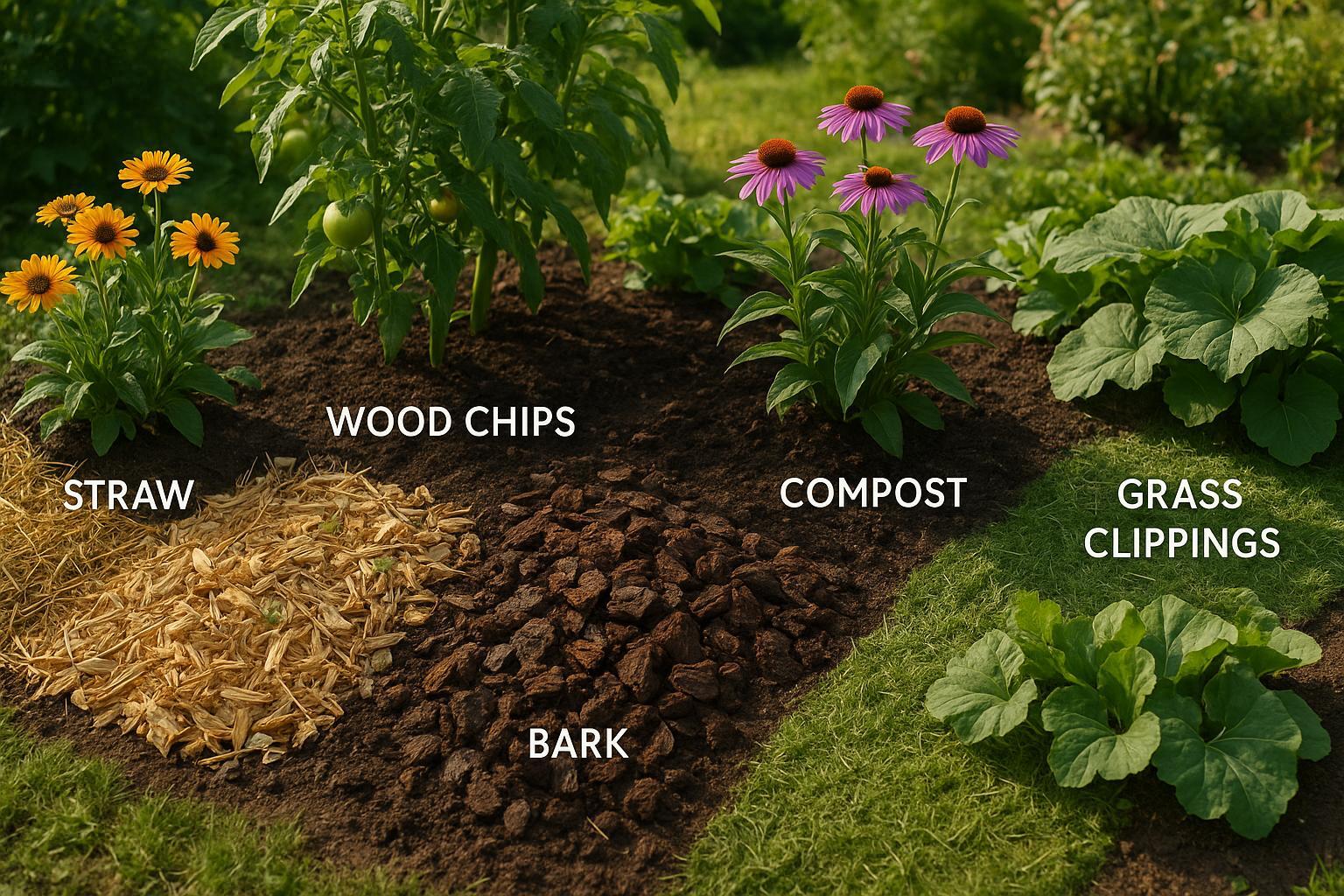
Top 5 Mulch Types for Sustainable Gardening
Explore the top 5 eco-friendly mulch types that enhance garden health, support plants, and promote sustainable gardening practices.
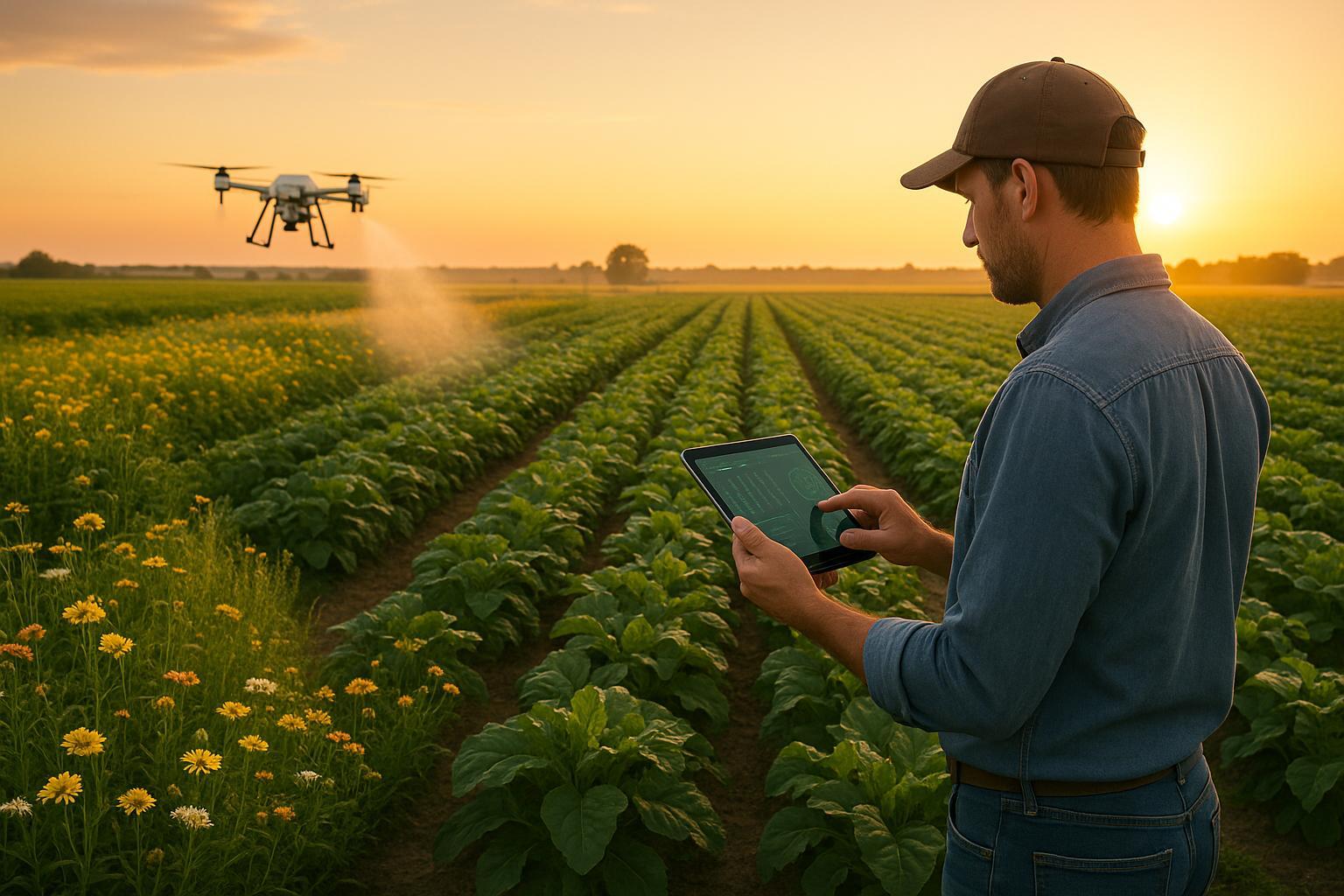
AI in Pest Control: Biological and Chemical Integration
Explore how AI is revolutionizing pest control by integrating biological and chemical methods for more efficient, sustainable farming.
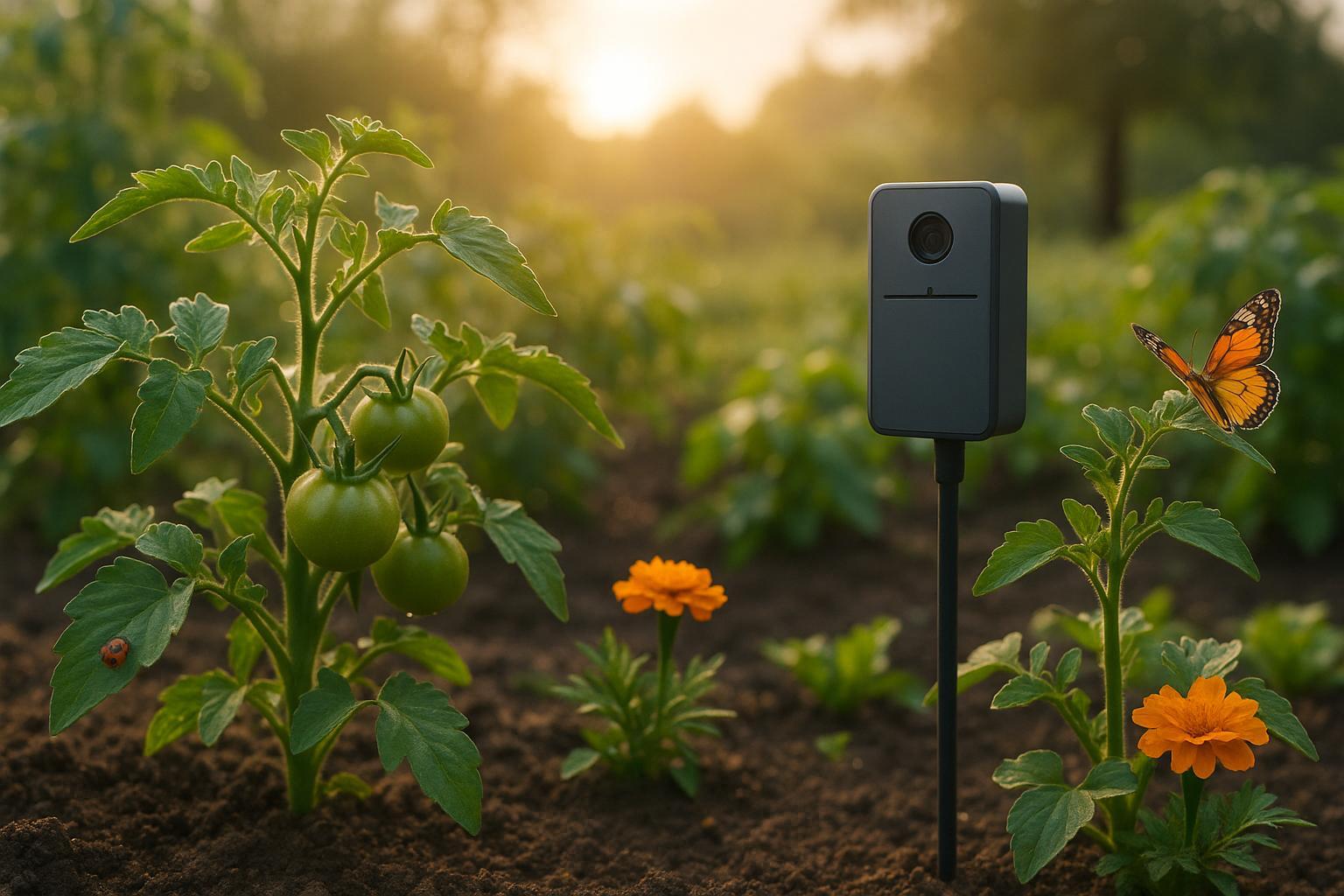
AI Pest Control: How Algorithms Detect Threats
Explore how AI is transforming pest control through early detection, eco-friendly solutions, and accessible tools for all gardeners.
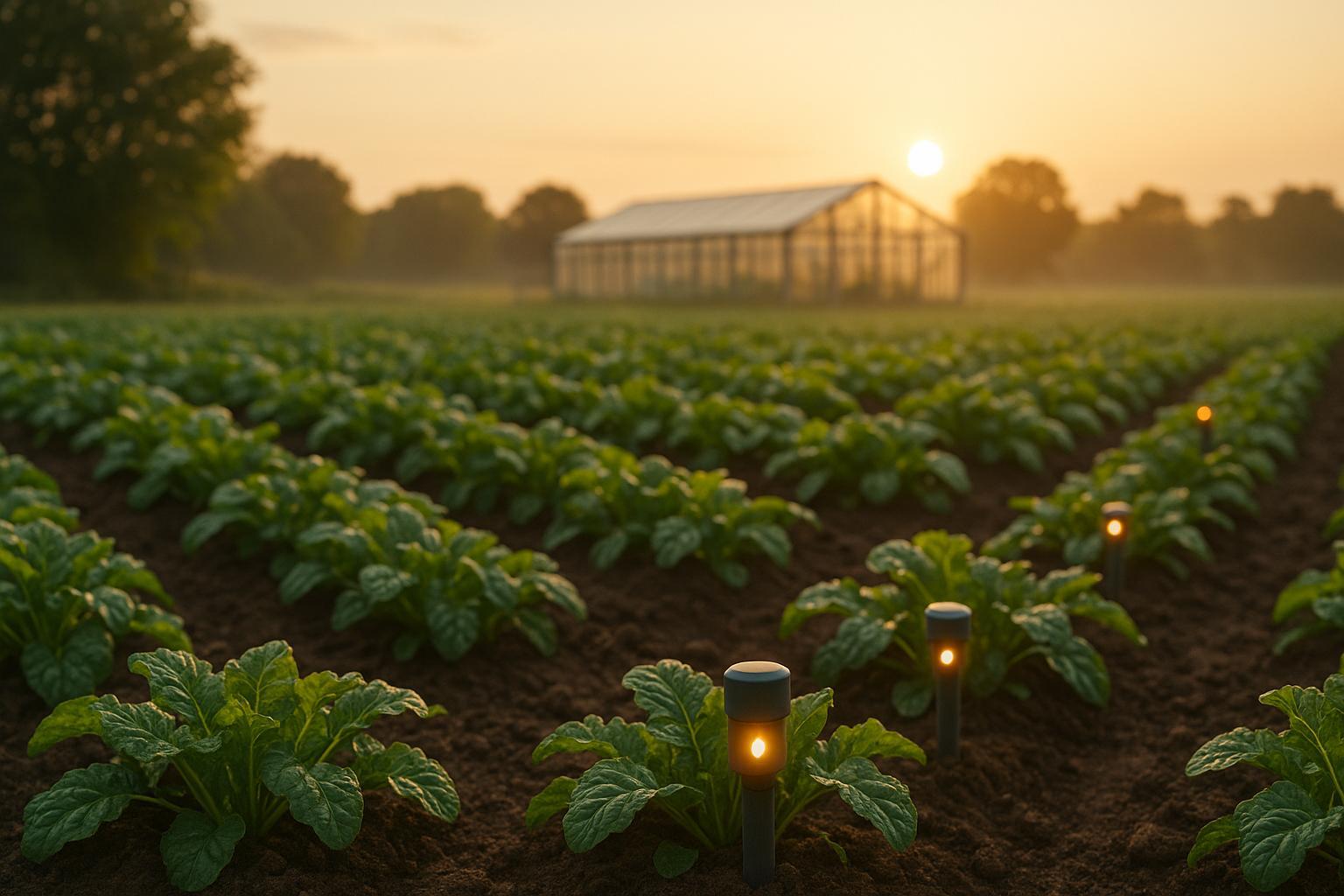
How Sensor Networks Detect Plant Diseases Early
Learn how sensor networks enable early detection of plant diseases, improving crop health and reducing losses through real-time monitoring and AI analysis.
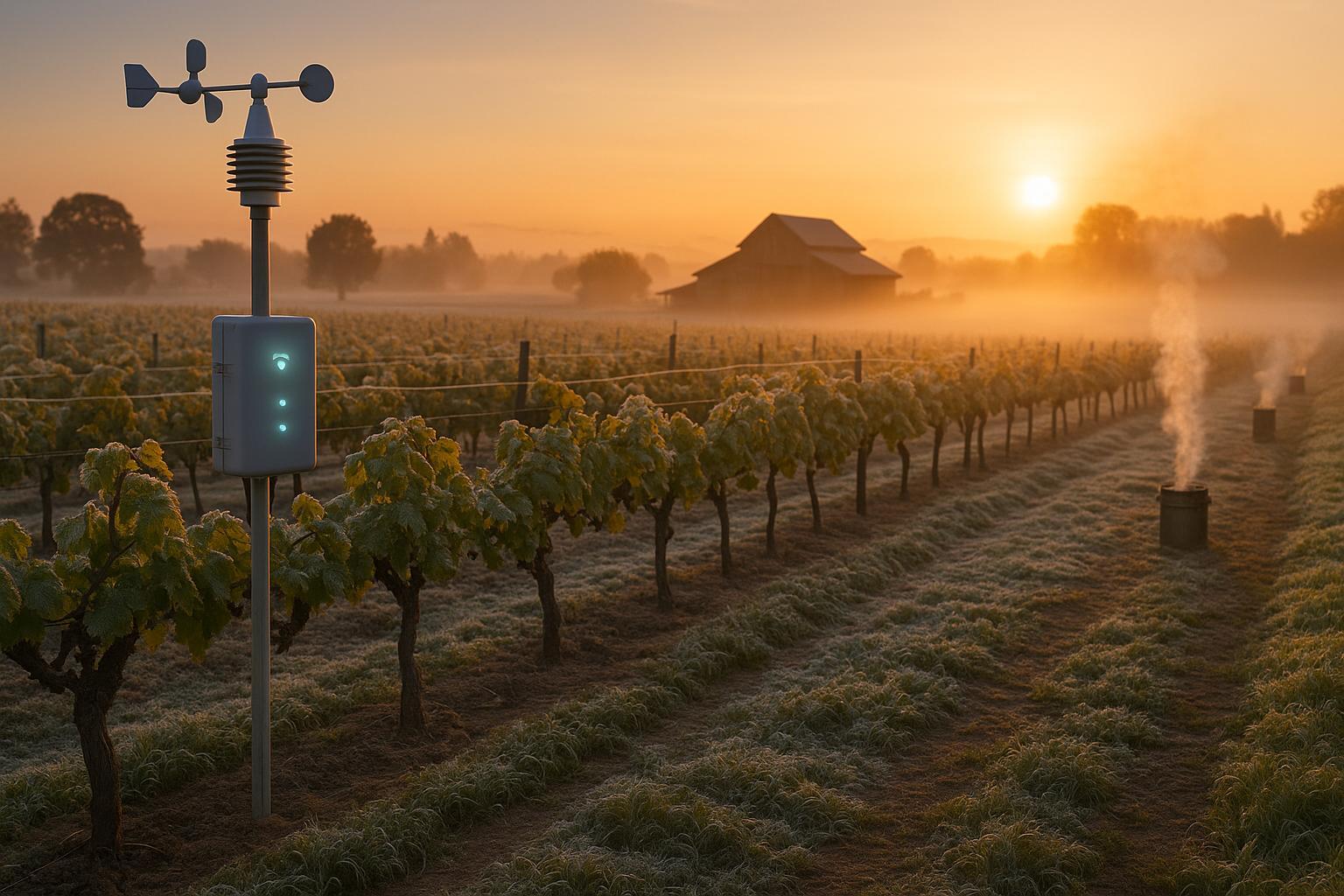
AI vs. Traditional Frost Protection
Explore the advantages of AI-driven frost protection systems over traditional methods, highlighting efficiency, accuracy, and long-term savings for farmers.

Effective Methods to Stop Cats From Pooping in Your Garden
Discover practical strategies to prevent cats from using your garden as a litter box. Learn how to deter cats and protect your outdoor space from unwanted waste.